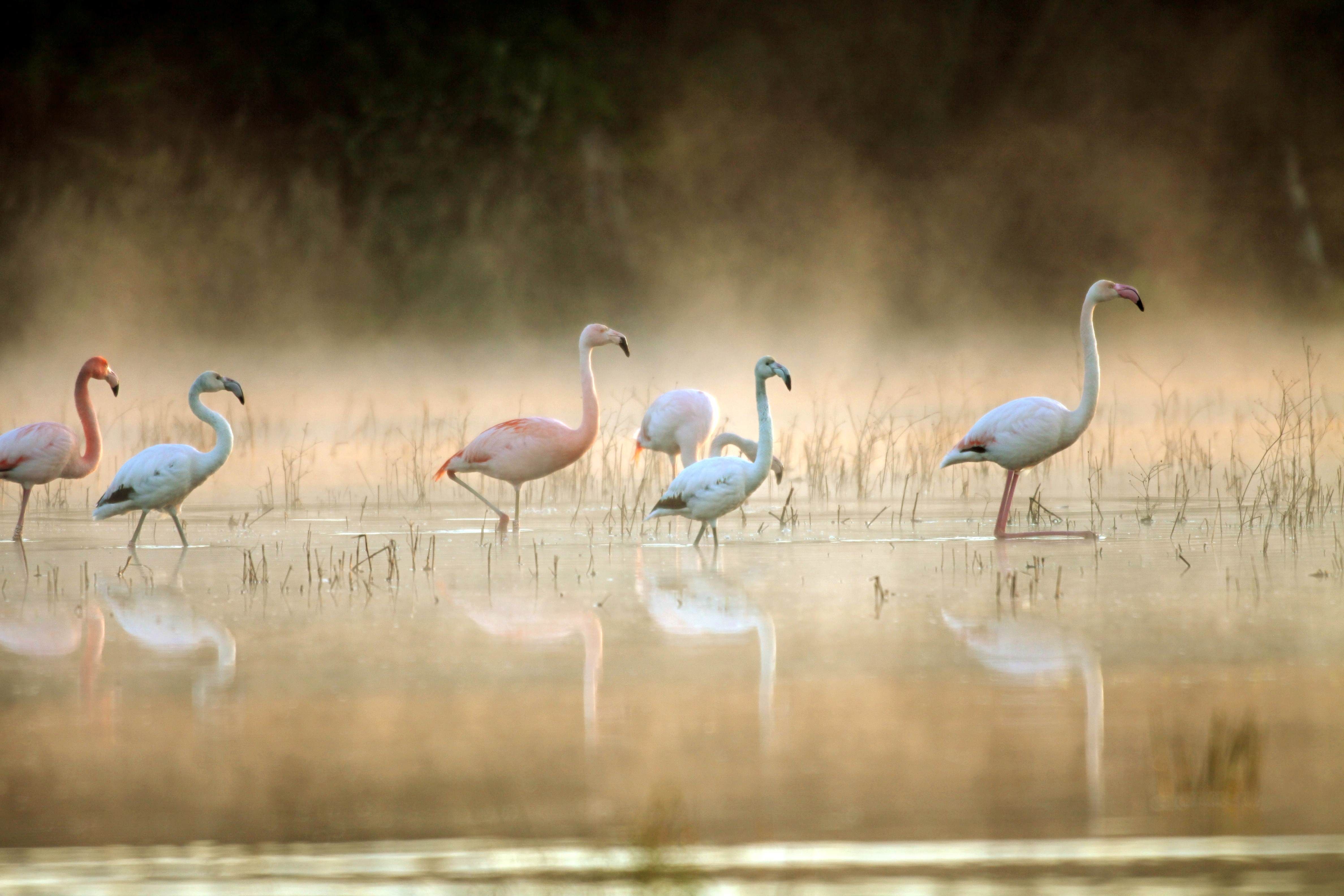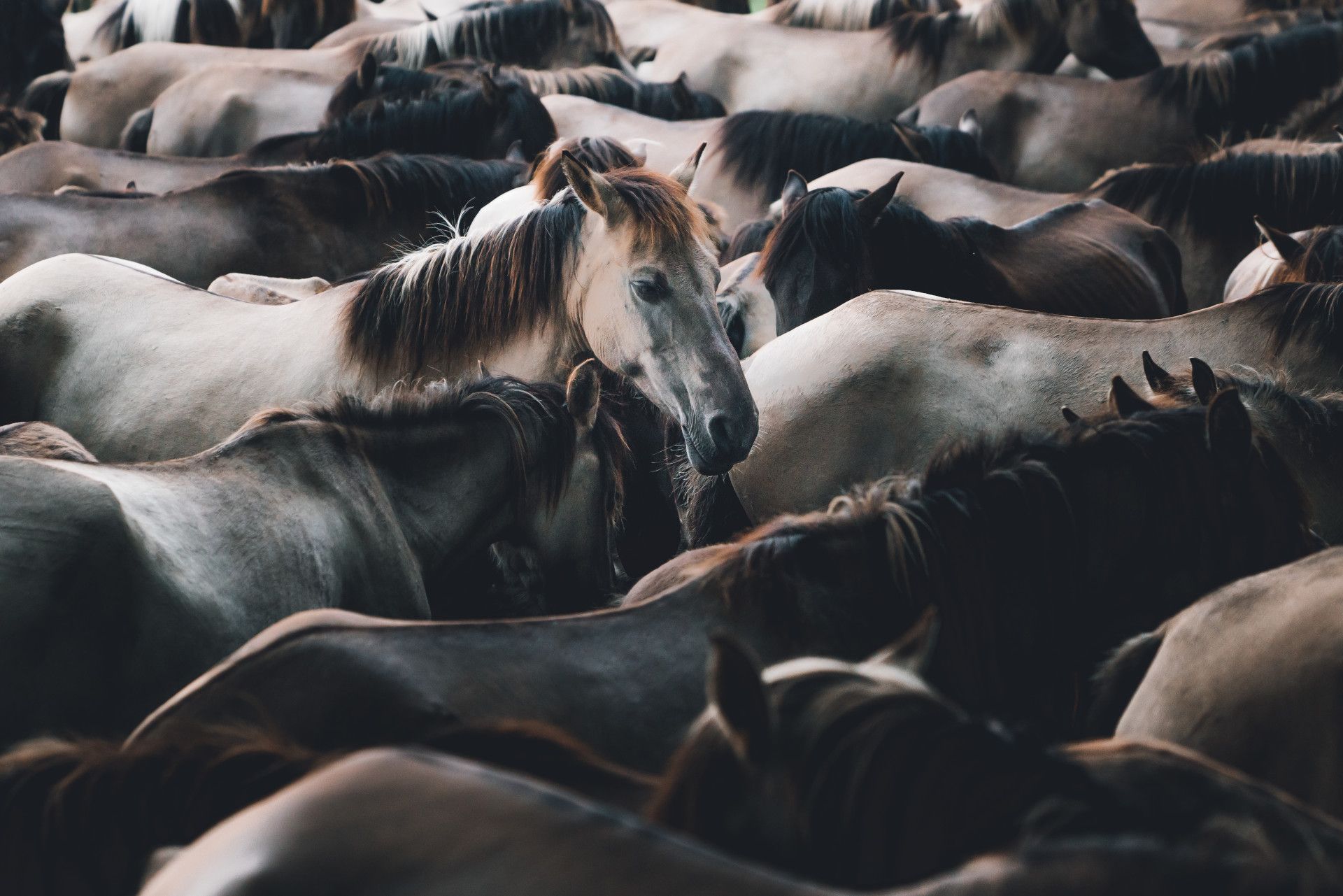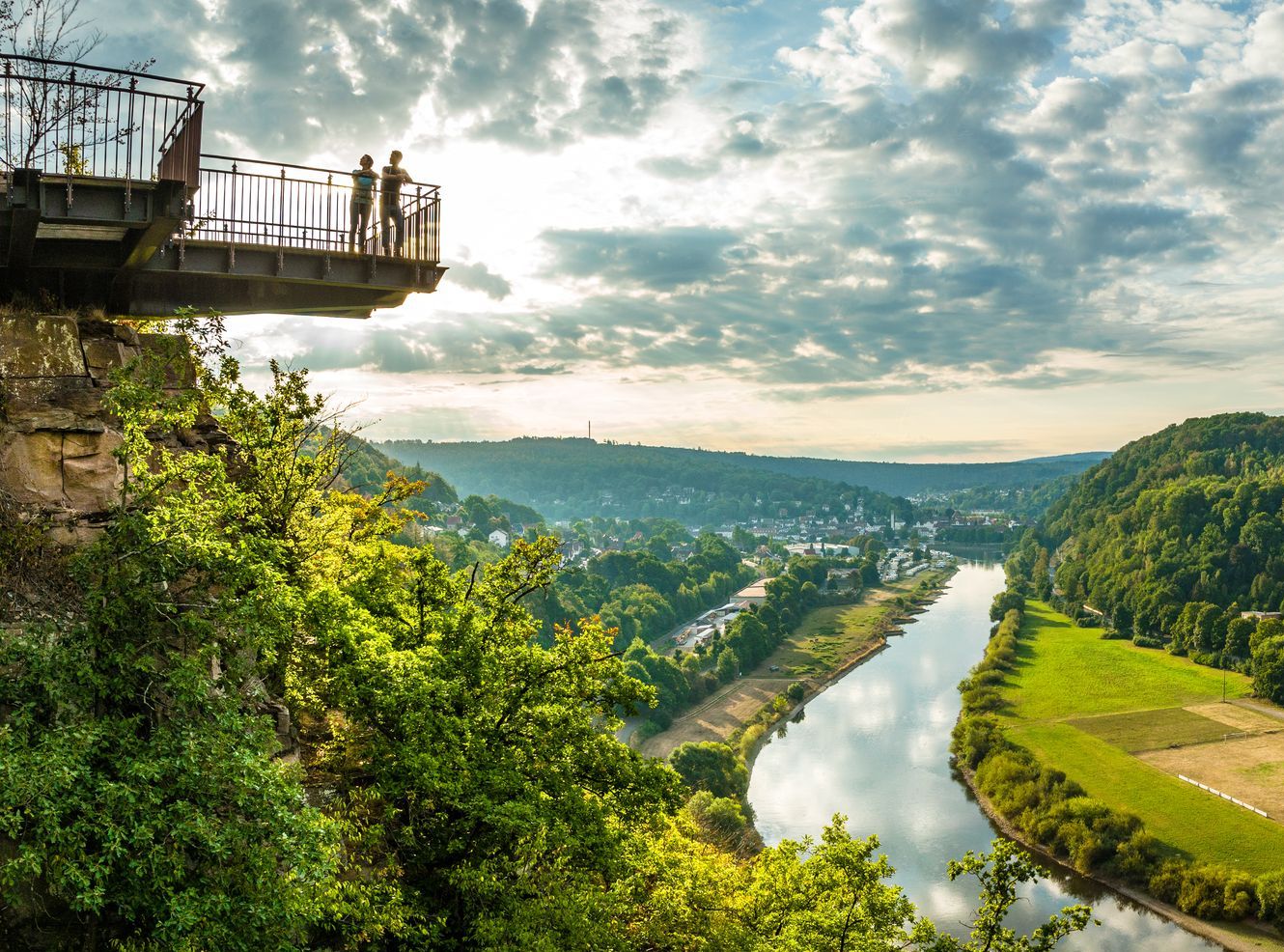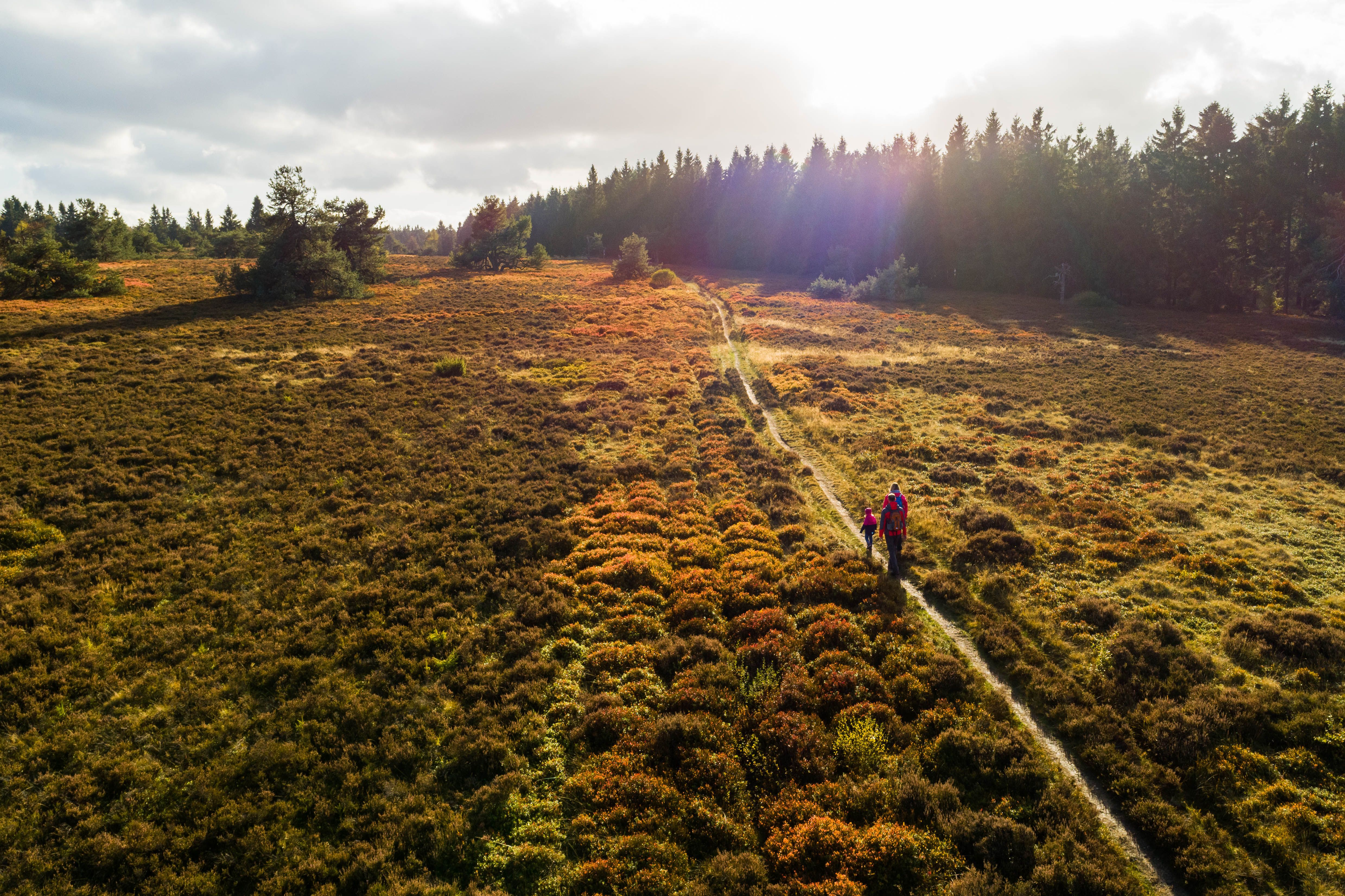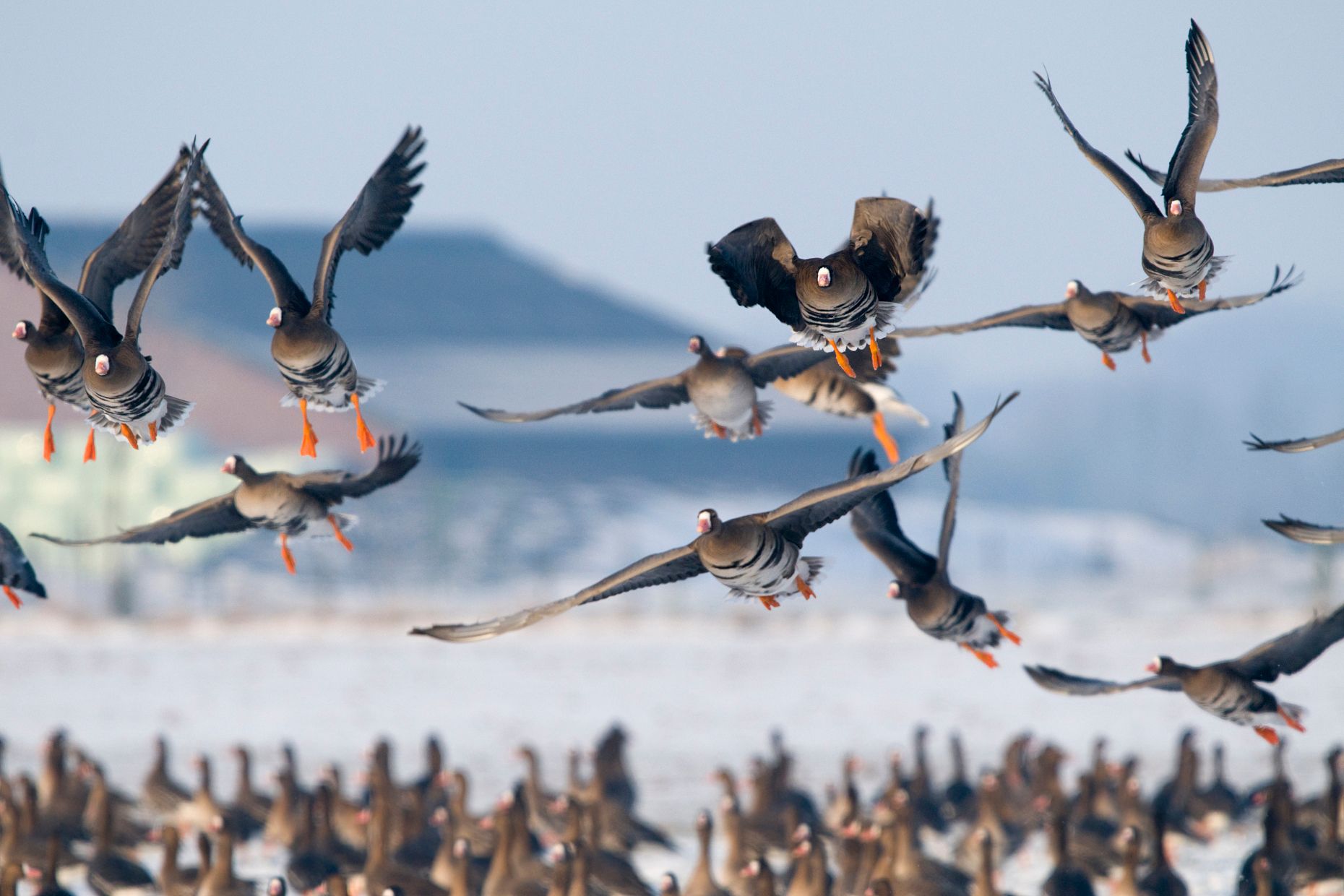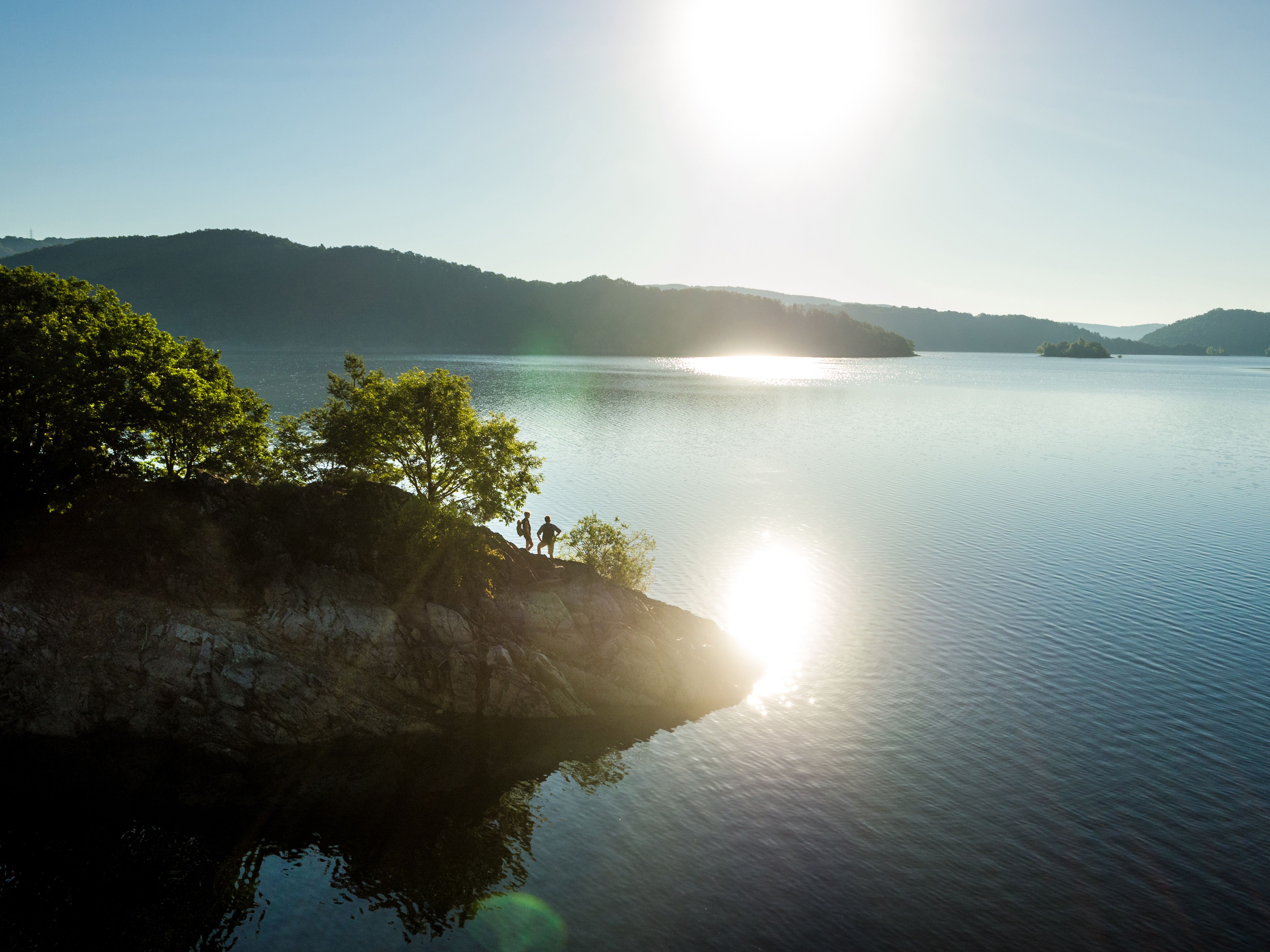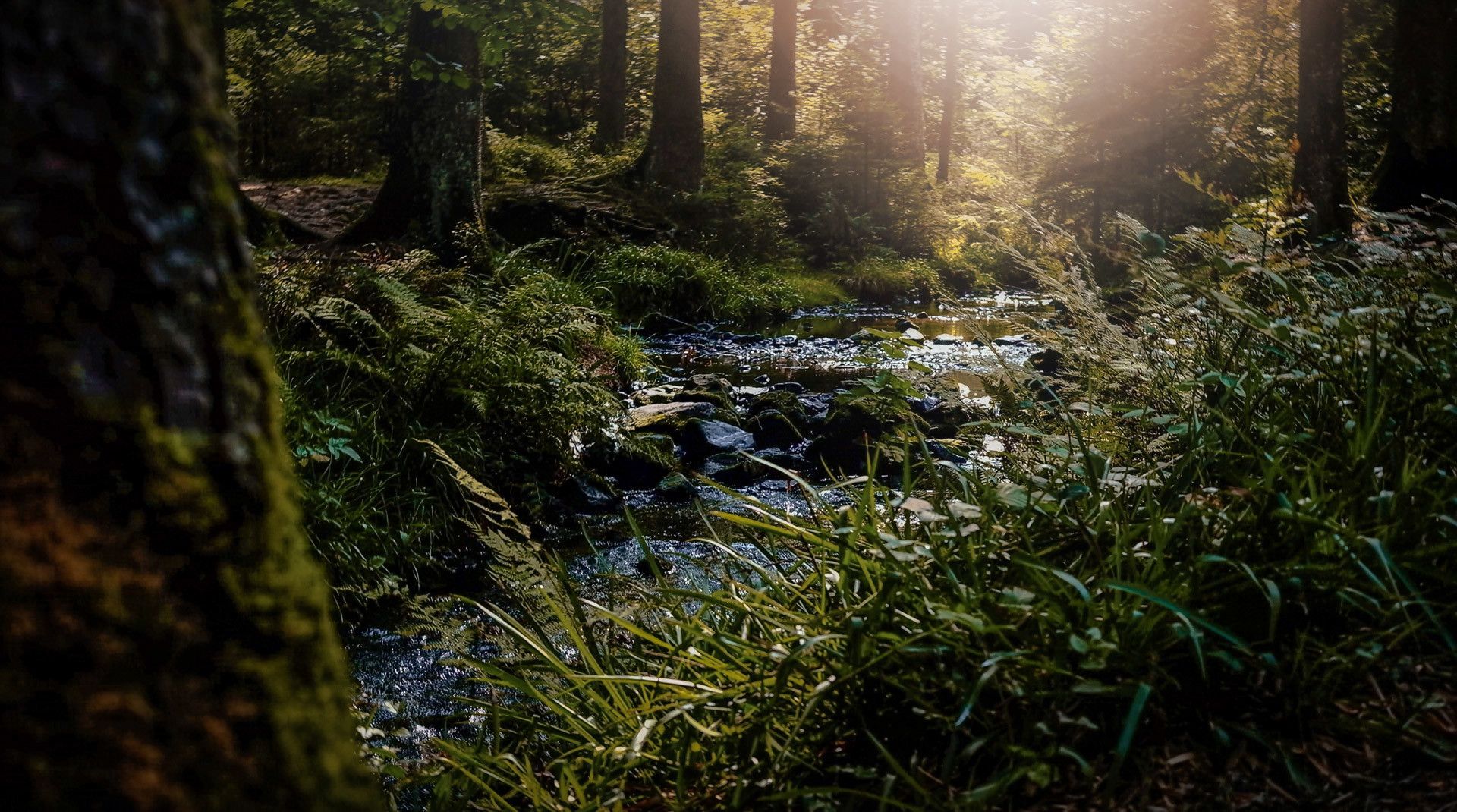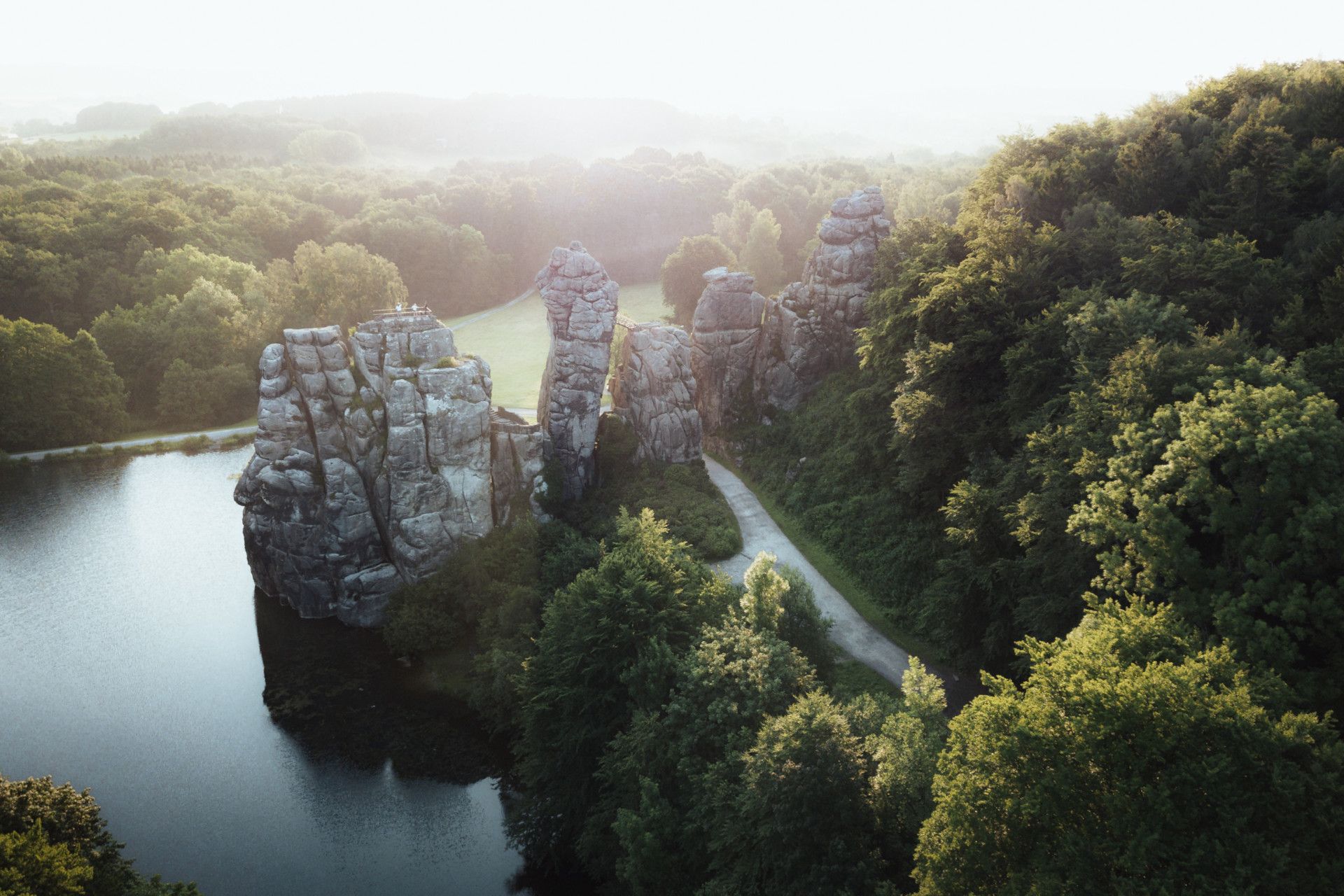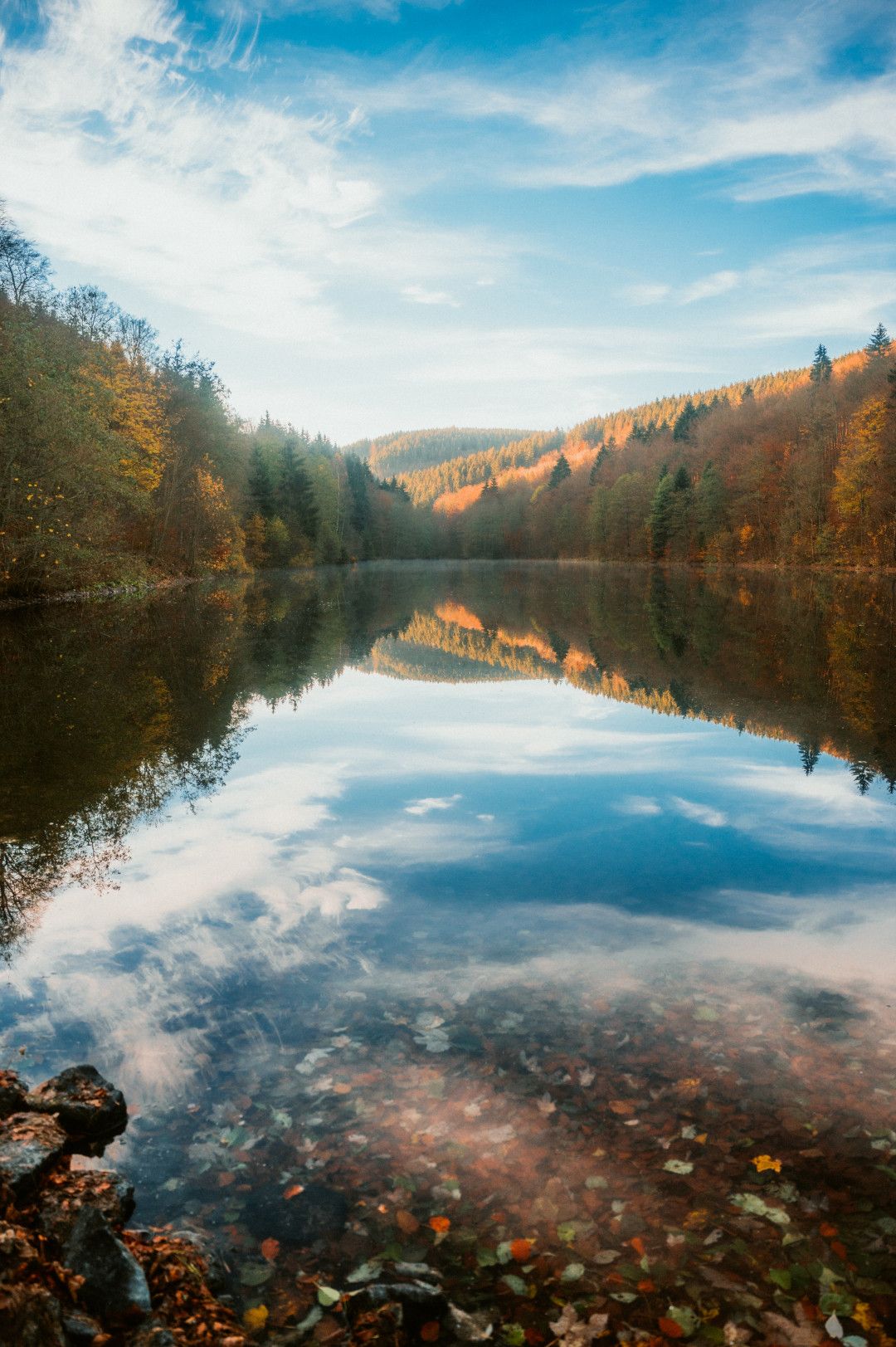Would you have thought that wild flamingos live, bison roam and wild horses graze in North Rhine-Westphalia? The fact is: Nature in NRW is sometimes pretty wild and colourful. If you head outside here, you can experience some wonderful surprises - and enjoy plenty of greenery. Well over half of the state is made up of forests, rivers, meadows and fields. The twelve nature parks alone now cover around 40 per cent of the area. Come with us on a journey of discovery and visit rare animals and plants!
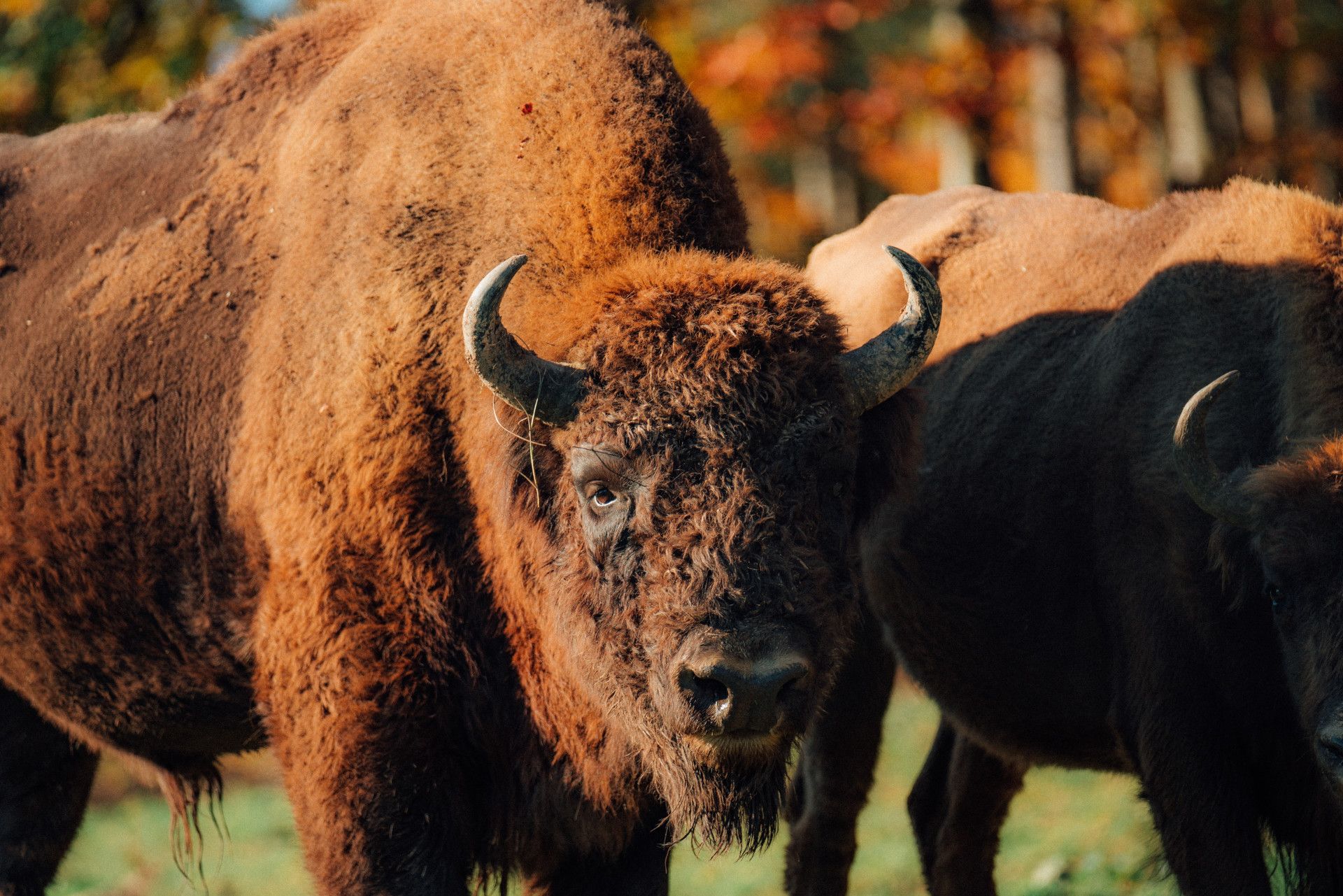
Our nature favouritesThe wild 7
- Free-living flamingos
Garrel Exotic birds have settled in the "Zwillbrocker Venn" nature and bird sanctuary. Wild flamingos have chosen the area in Münsterland as their breeding ground, making it the northernmost flamingo breeding colony in Europe. The pink birds can be observed here from March to July and, if breeding is successful, until September. If you want to get close to them, you can hop on your bike, as the 450-kilometre-long Flamingo Route leads right past the long-legged birds.Learn moreBiologische Station Zwillbrock, Flamingos in the Zwillbrocker Venn - Wild bison
Bad Berleburg Europe's largest land mammals weigh up to a ton. In the Siegen-Wittgenstein region, there is a good chance of catching a glimpse of the animals, because in the bison wilderness on the Rothaarsteig near Bad Berleburg, a small group of bison roam a natural but enclosed area of around 20 hectares.Learn moreLeo Thomas, Tourismus NRW e.V., Bison in the bison wilderness on the Rothaarsteig - Dülmen wild horses
Dülmen Deep in the Münsterland, surrounded by forests and heathland, lives the last herd of wild horses in Germany. To the west of Dülmen, around 400 wild horses roam through the Merfelder Bruch, a unique experience of nature. However, humans sometimes intervene in the natural course of events: the one-year-old stallions are regularly separated from the herd on the last Saturday in May - for the sake of peace and quiet.Learn moreLeo Thomas, Tourismus NRW e.V., Merfelder Bruch Wildpferde - Butterfly paradise over the Weser
Beverungen Learn moreThe Hanover cliffs high above the Weser are so warm and dry that rare butterflies feel particularly at home here. Numerous species that otherwise favour warmer regions such as the Mediterranean have settled on the south-facing cliffs. Well over 500 butterfly species have already been recorded here. Other animals and plants that are otherwise more at home in the south have also colonised the Weser. On balmy June nights, there is still plenty to see even after dark: Hundreds of glowworms illuminate the forest at night with their pale light, creating a natural spectacle of light.
Dominik Ketz, Teutoburger Wald Tourismus, Weser Sky-Walk im Teutoburger Wald - Hochheide "Neuer Hagen"
Winterberg When the heather blossoms in late summer, the nature reserve is covered in purple and violet - a colorful highlight and photogenic eye-catcher. But a walk across the "Neuer Hagen" high heath is a special nature experience at any time of year. Alpine and arctic plant species grow between birch trees, mosses, ferns and gnarled stunted pines. Rare bird species such as the woodlark and the great grey shrike feel at home in the largest high heath in North Rhine-Westphalia.Learn moreTourismus NRW e.V., Out and about in the "Neuer Hagen" nature reserve, which boasts the largest high heath in NRW - Wild geese as winter guests
Xanten When the days get shorter in autumn, the Bislicher Insel near Xanten is transformed into an impressive spectacle of nature: thousands of wild geese from northern Europe and Siberia stop off here to spend the winter in the protected floodplain landscape of the Lower Rhine. The nature reserve is considered one of the most important wintering areas for Arctic wild geese in Germany.Learn moreSebastian Hennigs, White-fronted geese in flight on Bislicher Insel - Wildnis-Trail
Monschau The Wilderness Trail runs for a total of 85 kilometers through the Eifel National Park and impressively demonstrates how nature can develop undisturbed. On four varied stages, visitors hike through dense beech forests, past wild stream valleys, open plateaus and former military training areas that have been transformed into valuable natural spaces after decades of military use.Learn moreTourismus NRW e.V., Dominik Ketz, Der Rursee mit spiegelnder Sonne in der Eifel
